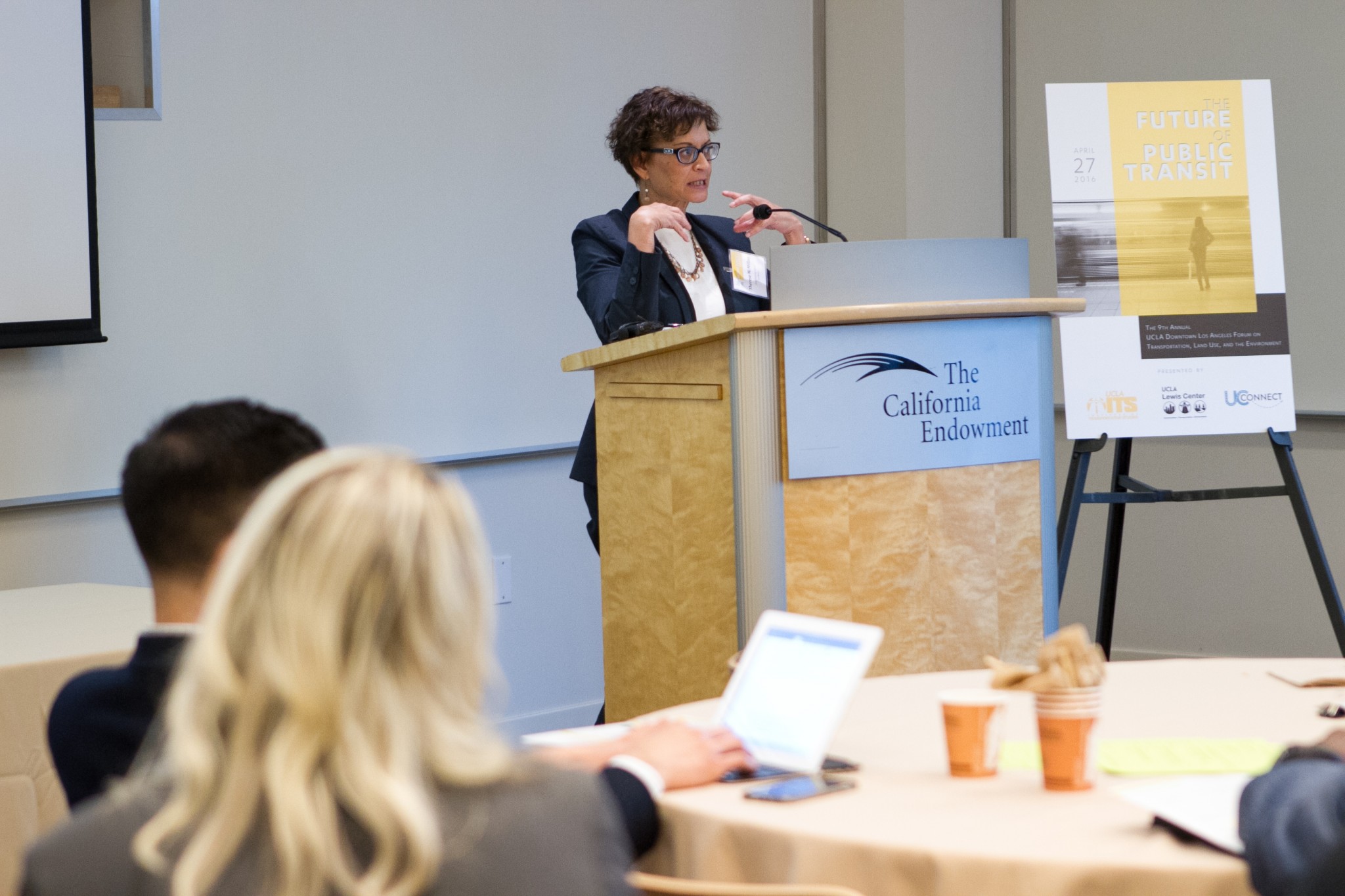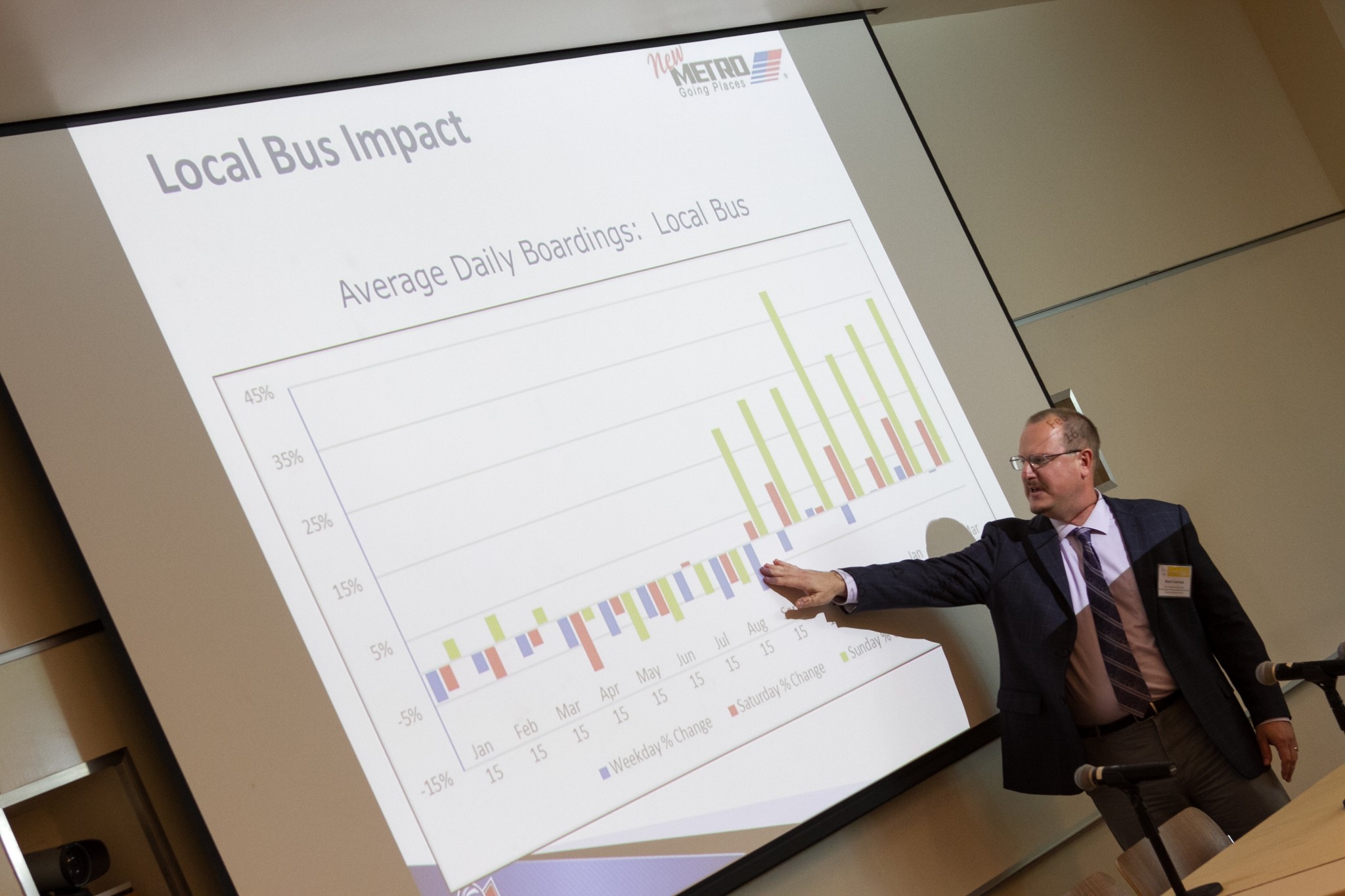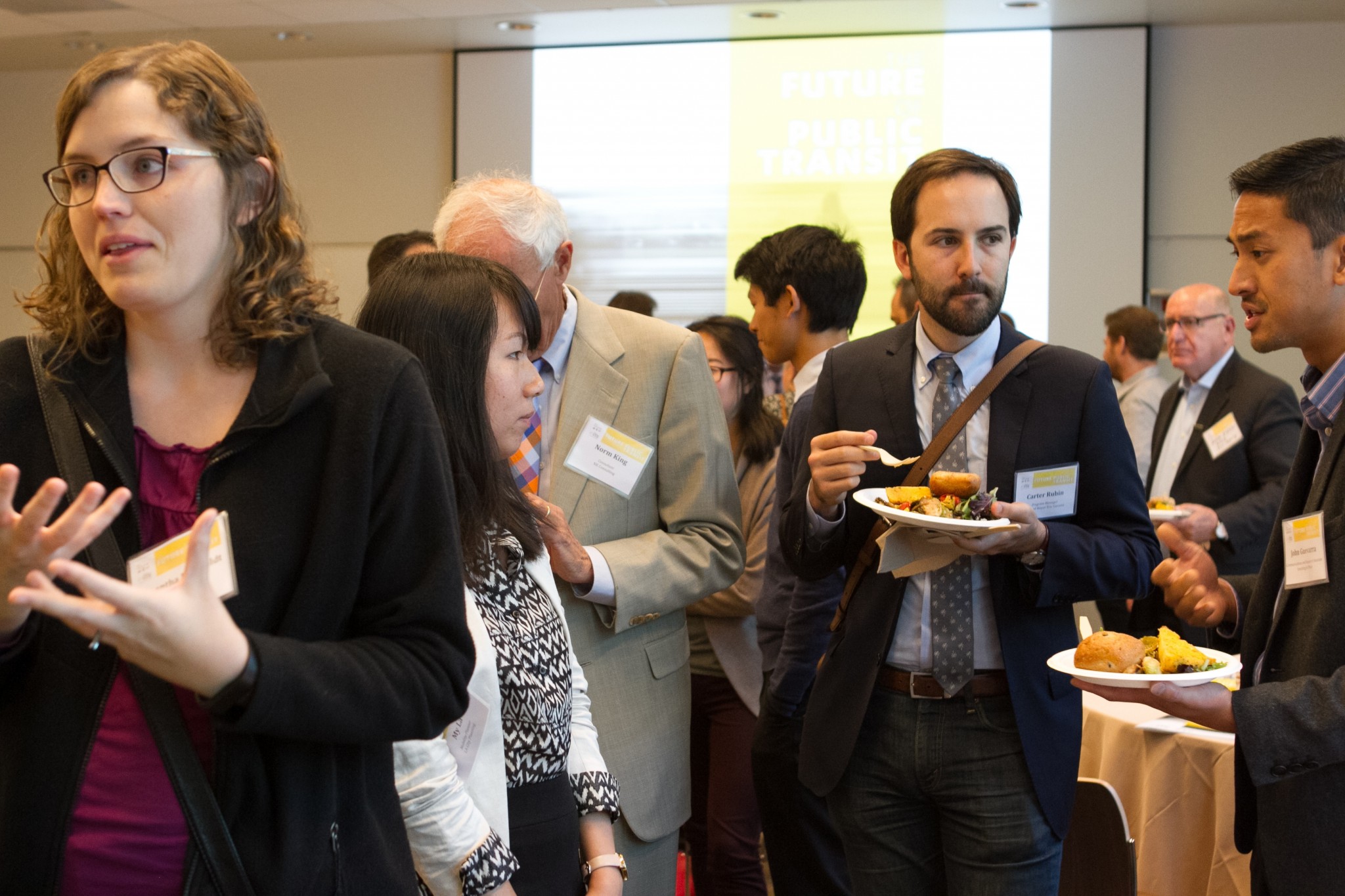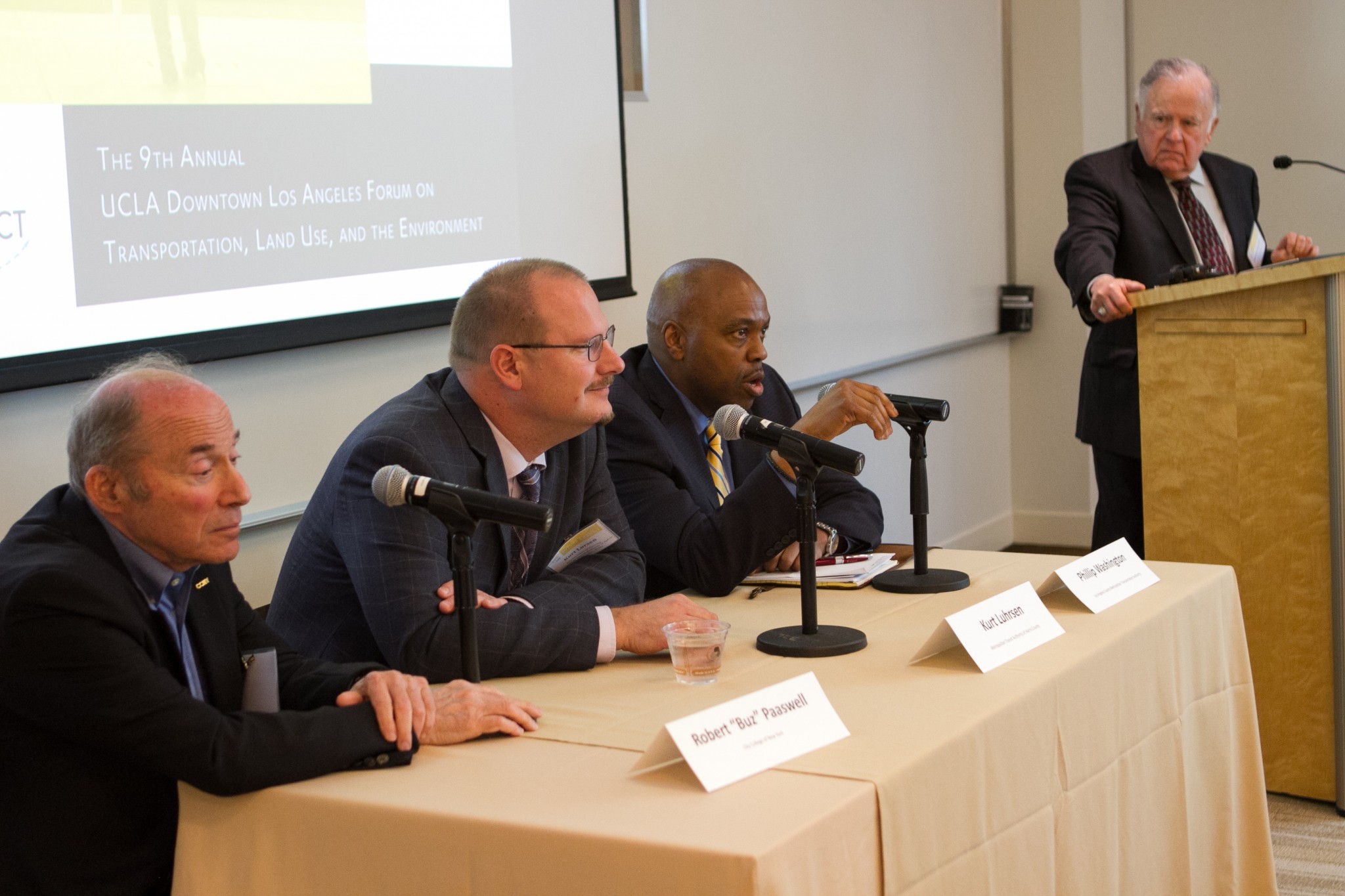If the first part of the “Future of Transit” conference was about cutting-edge research on travel trends and behavior, the next was all about hearing from practitioners about what has worked, what hasn’t, and what is ahead for the industry. The second panel of the day featured representatives from three transit agencies with very different constituencies and challenges. First up was Kurt Luhrsen, VP of Planning for the Metropolitan Transit Authority of Harris County, Texas. The Houston region is famous for its sprawl and car culture, but Luhrsen had an inspiring story to tell about a successful redesign of that city’s bus network.
As Houston has opened a number of new light rail lines in recent years, Luhrsen explained that the city has also recognized a need to realign its bus network. In particular, rider feedback on the city’s transit system focused on a need to improve existing service, not just build new services. For many years ridership was falling despite new capital improvements, and Luhrsen explained that the Harris County Transit Authority was able to reverse this process by making explicit tradeoffs about who their service would be designed for. For example, was ridership or coverage more important? Should service be based on peak-hour travel, or should it provide all-day mobility? The board agreed to focus 80% of its efforts on maximizing ridership and 20% on expanding coverage area, and with this in mind, Houston’s bus system was redesigned to make routes straighter, improve headways, and eliminate bus lines that duplicate light-rail routes. The result, according to Luhrsen, has been a projected 20% increase in boardings — a figure that exceeds the performance of many capital improvements that cost far more money.
Next, Phil Washington of L.A. Metro spoke about his agency’s plans for expansion, claiming that Metro envisions its timeline in decades, not years. The upcoming sales tax measure, which will be on the November ballot, will fund a number of capital-expansion projects for rail, bus, and road. Washington faced some skeptical questions about how effective these measures would be, since Metro’s last round of capital-expansion projects has not led to the ridership increases projected. He responded that a number of those projects are still in the works, and also noted that L.A.’s population was expected to increase by up to 2 million in the coming years —hardly the kind of phenomenon that can be solved by putting more cars on the road.
Robert “Buz” Paaswell of New York City then spoke about the issues faced by the nation’s transit capital. Paaswell, a Civil Engineering professor who ran the Chicago Transit Authority in the late 1980s, explained that basic service, not high-tech amenities, was the building block that allows the New York system to remain strong. And New York will need a system that can transport more riders than ever — the city’s subway is seeing record ridership and is badly in need of modernization, leading Paaswell to say that maintaining a State of Good Repair was a more important priority than any single capital project. Major disruptions like the September 11 attacks and Hurricane Sandy further prove the need for transit to be reliable and well-run.
Finally, the conference heard a keynote by Therese MacMillan, the new Chief Planning Operator for L.A. Metro. Having just returned from a stint as acting director of the Federal Transit Administration, MacMillan shared the insight that “If you’ve seen one transit agency, you’ve seen one transit agency.” Local solutions must be tailored to local problems, and as a former L.A. resident who has just returned, MacMillan was well aware of the challenges facing the region (she told the audience that she and her family are striving to be a one-car household). In particular, she outlined several principles: First, the need for comprehensive data and good information to guide decision-making. Second, she said, “Change is happening, and change is happening very fast.” Transit agencies that try to thwart this will find themselves on the wrong side of history, she warned — and the question is how the industry will work with limited resources, provide mobility for more people, and still keep safety as its first priority.
Above all, she said, agencies need to ask riders what they want, and listen carefully to the answers. There is a huge gap between the number of people who want to use public transit in their daily lives, and the number who are realistically able to do so. Is transit just another mode of travel, or can it be an agent of equity in cities? The particular solutions may change from city to city, but transit researchers and leaders know they have their work cut out for them — and are rising to meet the challenge.
—by Jordan Fraade
Part 1 of the DTLA Forum Recap.
Speakers’ presentation slides
What if we Started over from Scratch? How Houston is Reimagining its Transit System
Kurt Luhrsen
New York Public Transit
Robert Paaswell



